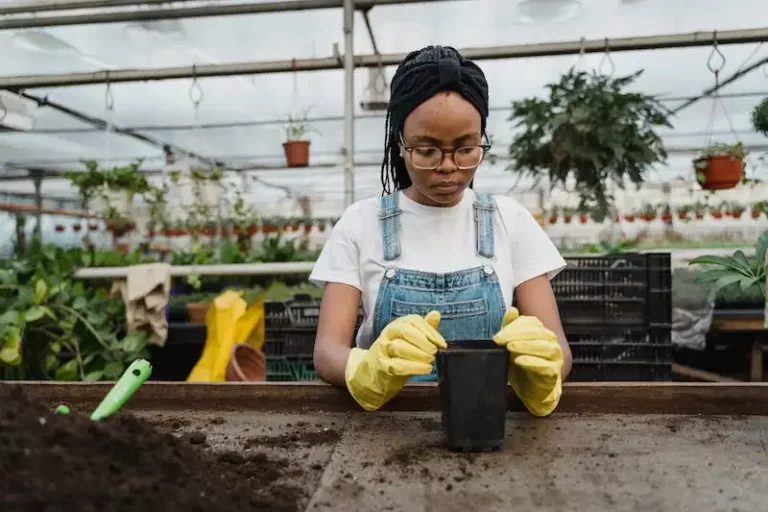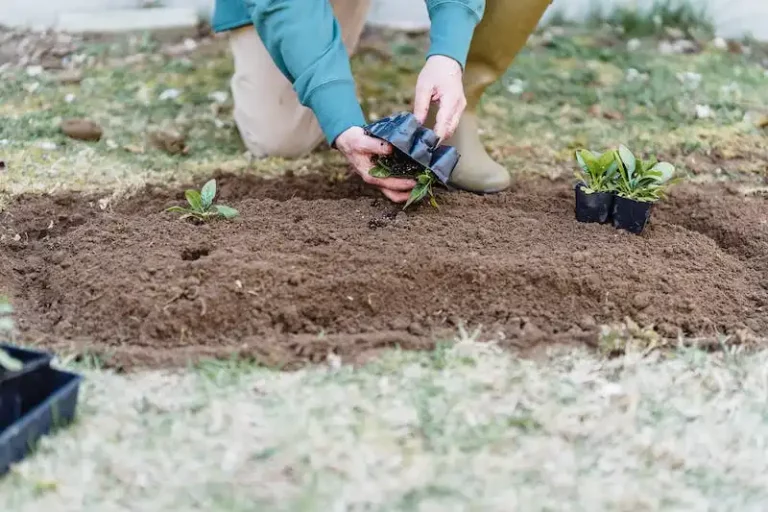Are you a citrus lover and want to add a tangy touch to your garden? Limes are a quick-growing, fruit-bearing tree that can bring a taste of tropical Asia to your backyard. Originating from the sunny regions of Southeast Asia, limes are known for their heavy fruit production and their ability to thrive in warm, well-drained soil and lots of sun. In this guide, we will provide you with all the necessary tips and advice needed to successfully plant, care for, and harvest limes in your garden.
Planting limes: When planting lime trees, it is important to choose a sunny spot in your garden that receives at least 6 to 8 hours of sunlight per day. Limes prefer a slightly acidic soil with a pH level between 6 and 7. If your soil is not naturally acidic, you can add horticultural sulfur or peat moss to lower the pH level. Before planting, make sure the soil is well-drained to prevent waterlogging, as excess water can cause root rot and other problems.
Caring for lime trees: Lime trees require regular watering, especially during dry spells or in the early stages of growth. However, be cautious not to overwater, as this can lead to root rot. Additionally, lime trees benefit from regular fertilizing, especially during the fruit-bearing season. A citrus-specific fertilizer high in nitrogen, phosphorus, and potassium is recommended. Finally, remember to mulch around the base of the tree to retain soil moisture and suppress weed growth.
Overwintering limes:
Limes are generally not frost-tolerant and need protection during the winter months, especially in colder regions. If you live in an area where temperatures regularly drop below freezing, it is best to grow lime trees in containers that can be moved indoors during winter. When overwintering lime trees indoors, place them in a well-lit room, preferably facing west or south, and away from any drafts or heating vents. Water sparingly during the dormant period, and resume regular watering in spring when new growth appears.
Harvesting limes: Limes are harvested when they are fully ripe. This is usually indicated by a change in color from green to yellow. To harvest limes, gently twist the fruit and pull it towards the stem. Alternatively, you can use pruning shears to cut the fruit at the stem. When harvesting limes, make sure to wear gloves, as the juice can cause skin irritation. Finally, enjoy your freshly picked limes in a refreshing drink, flavorful dish, or as a zesty addition to your favorite recipes!
How To Grow And Care For Your Lime Tree
Growing and caring for your own lime tree can be a rewarding and enjoyable experience. Limes are especially popular for their tangy flavor and versatility in cooking and beverages. Follow these steps to ensure your lime tree thrives:
Choosing the Right Site
When planting a lime tree, it’s important to choose a sunny location that receives at least 6 to 8 hours of direct sunlight per day. Limes thrive in warm climates, so make sure the site provides enough warmth. If you live in a colder region, consider planting your lime tree in a container that can be moved indoors during winter.
Planting Process
Before planting, make sure the soil is well-draining and slightly acidic. If your soil is heavy clay, consider adding organic matter or perlite to improve drainage. Dig a hole that is slightly larger and deeper than the root ball of your lime tree. Place the tree in the hole and backfill with a mixture of soil and compost. Water thoroughly after planting to settle the soil.
Support and Care
Young lime trees may need support until their roots establish. Use stakes or trellises to provide support and protect the tree from strong winds. Water your lime tree regularly, keeping the soil slightly moist but not waterlogged. Fertilize every few months with a balanced fertilizer to promote healthy growth. Prune your lime tree annually to maintain its shape and remove any dead or damaged branches.
Harvesting and Overwintering
Limes are typically ready to harvest when they turn fully yellow. They can be left on the tree longer for a sweeter taste. To protect your lime tree during winter, especially in colder climates, consider overwintering it indoors. Place the tree in a sunny spot with good humidity, and reduce watering and fertilizing during this time.
Common Problems
If your lime tree leaves turn yellow, it may be a sign of overwatering or nutrient deficiencies. Adjust your watering schedule and consider using a citrus-specific fertiliser. Lime trees can also suffer from pests and diseases, so regularly check for signs of infestation and take appropriate measures to treat the issue.
Storing and Using Limes
Once harvested, limes can be stored in a cool, dry place for a couple of weeks. They can also be juiced and frozen for longer storage. Limes are a versatile ingredient in cooking and beverages, adding a refreshing and tangy flavor to various recipes.
By following these tips and providing proper care, you can enjoy the fruits of your own lime tree in no time. Happy gardening!
How to use a lime tree in the garden
Growing a lime tree in your garden can bring a lot of joy and satisfaction. Not only do these trees produce delicious fruits, but they also add beauty and a refreshing fragrance to your outdoor space. Here are some tips on how to effectively use a lime tree in your garden:
Planting: When planting your lime tree, choose a sunny spot in your garden with well-draining soil. Make sure to dig a hole that is slightly bigger than the root ball and backfill it with loose, rich soil.
Caring for the tree: Lime trees require regular watering, especially during dry periods. Make sure to water the tree deeply, allowing the water to penetrate the soil and reach the roots. Adding a layer of mulch around the base of the tree can help retain moisture and prevent weed growth.
Support and pruning: As your lime tree grows, it may require support to prevent the branches from bending or breaking. Use stakes or trellises to provide additional support. Pruning is also important to remove dead or damaged branches and to maintain the shape of the tree.
Overwintering: Depending on the climate in your area, you may need to take precautions to protect your lime tree during the winter months. If you live in a colder region, consider moving the tree indoors or covering it with a frost cloth to protect it from freezing temperatures.
Fruit production: Lime trees are self-fertile, meaning they can produce fruits on their own. However, you can enhance fruit production by hand-pollinating the flowers using a small brush. Fruits typically start to appear in late winter or early spring.
Troubleshooting: Like any plant, lime trees can encounter problems such as fungal diseases or pests. Keep an eye out for yellowing foliage, which may indicate nutrient deficiency or overwatering. If you notice any issues, consult a local gardening expert or ask for advice at your nearest plant nursery.
Whether grown in containers or directly in the ground, lime trees can thrive in various zones and climates. Just make sure to provide them with the right amount of water, sunlight, and care. Enjoy the beauty and the taste of your very own limey addition to your garden!
How to grow a lime tree
Growing a lime tree is a rewarding experience that can provide you with fresh citrus fruits for years to come. Limes, like their citrus cousin, oranges, have specific needs when it comes to planting and care. Here’s what you need to know:
Planting: Lime trees need well-drained soil, so make sure to choose a location with good drainage. If you’re planting your lime tree in a container, ensure that it has drainage holes to allow excess water to escape. When planting, dig a hole that is slightly larger than the rootball of the tree. Place the tree in the hole, backfill with soil, and water deeply.
Sunlight: Limes trees love sunlight and require at least 6 to 8 hours of direct sun each day. Ensure that your lime tree is placed in a sunny spot where it can receive the necessary amount of light.
Watering: Limes trees need regular watering to thrive. Keep the soil evenly moist, but not waterlogged, as this can lead to root rot and other fungal diseases. Water deeply and allow the soil to dry slightly between waterings.
Support: Lime trees can grow quite large and heavy with fruits, so they may need additional support. Use stakes or trellises to provide support and prevent the branches from breaking under the weight of the fruits.
Propagation: Lime trees can be propagated from seeds or cuttings. If you choose to grow your own lime tree from a seed, keep in mind that it may take several years to bear fruits. Cuttings, on the other hand, can be quicker to produce fruit-bearing trees.
Harvesting: Limes are ready to be harvested when they are fully ripe and have a deep green color. Simply twist or cut the fruits from the tree. If you’re unsure whether the fruit is ready, give it a gentle squeeze – a ripe lime will give slightly to pressure.
Overwintering: Depending on where you live, you may need to protect your lime tree from freezing temperatures. If the threat of frost or cold weather occurs, consider moving your lime tree indoors or providing it with some form of protection, such as a frost blanket or horticultural fleece.
Tips and advice: To ensure optimal fruit production and flavor, it’s recommended to remove any competing vegetation from around the lime tree. Additionally, be careful when handling lime trees, as they have thornless but still toxic parts. Lastly, for container-grown lime trees, make sure to repot them into larger containers every few years to allow for proper root growth and development.
By following these instructions, you can easily grow your own lime tree at home and enjoy the fresh, tangy flavor of homegrown limes!



